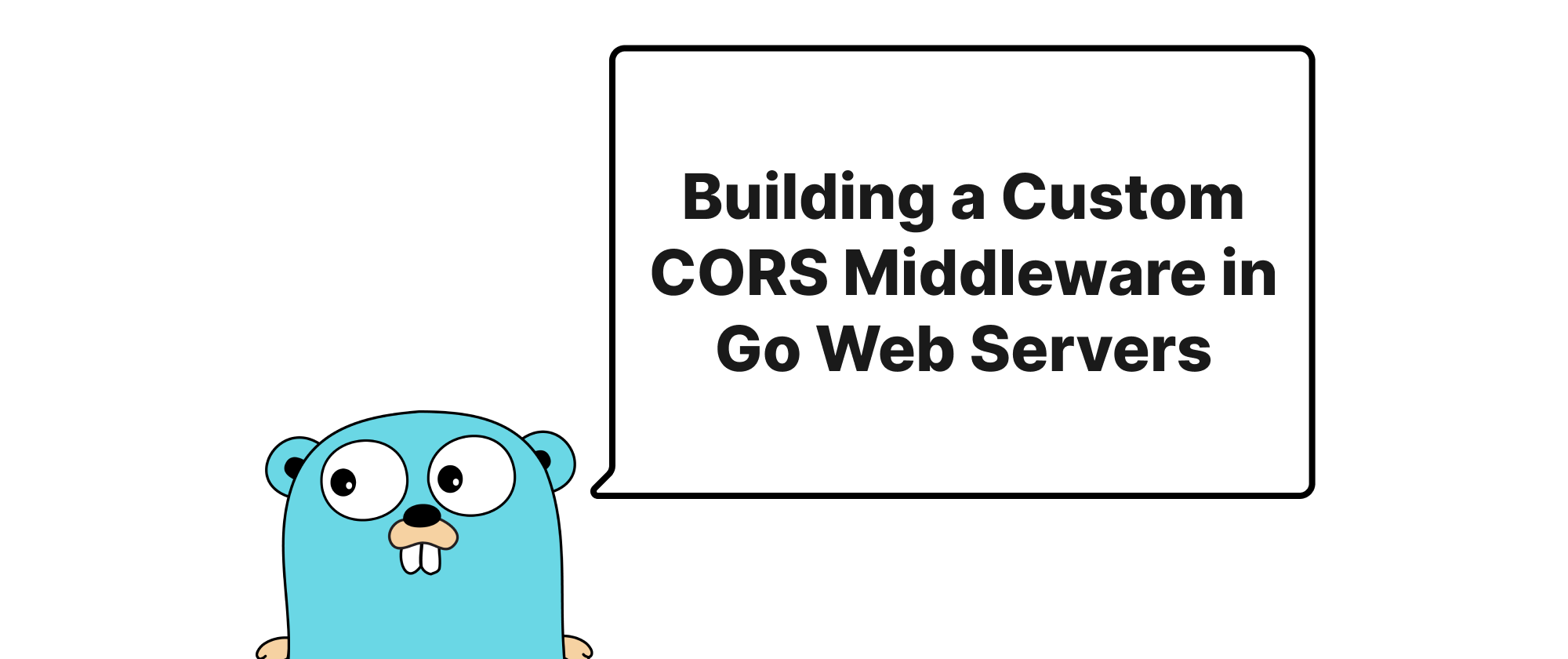Go Web Routers A Performance and Feature Dive
James Reed
Infrastructure Engineer · Leapcell

Introduction
Building performant and maintainable web applications in Go often involves choosing the right routing mechanism. The router acts as the traffic cop, directing incoming HTTP requests to the appropriate handler functions based on their URL paths and methods. Go offers multiple options for this crucial task, ranging from its built-in http.ServeMux to popular third-party libraries like gorilla/mux and chi. Each of these choices comes with its own set of advantages and disadvantages, primarily concerning their feature richness, performance characteristics, and ease of use. Understanding these trade-offs is essential for Go developers to make informed decisions that best suit their project's requirements, whether it's a simple API or a complex web service. This article will delve into each of these routing solutions, examining their core functionalities, providing practical code examples, and finally, discussing their relative performance and when to choose one over the others.
Core Routing Concepts
Before diving into the specifics of each router, let's clarify some fundamental concepts related to HTTP routing in Go.
- HTTP Handler: In Go, an
http.Handleris an interface with a single method,ServeHTTP(w http.ResponseWriter, r *http.Request). This method is responsible for processing an incoming HTTP request (r) and sending a response back to the client (w). All routing libraries eventually dispatch requests to anhttp.Handler. - Multiplexer (Mux): A multiplexer, or router, is essentially a table that maps incoming request paths and methods to specific
http.Handlerinstances. When a request arrives, the mux determines which handler should process it. - Path Matching: Routers use different algorithms to match incoming URLs against registered routes. This can range from simple prefix matching to advanced regular expression-based matching or tree-based matching for highly efficient variable path segments.
- Method Matching: Beyond path matching, routers can also differentiate routes based on the HTTP method (GET, POST, PUT, DELETE, etc.), allowing different handlers for the same URL but different operations.
- URL Parameters: Modern web applications often require dynamic URLs, where parts of the path represent variable data (e.g.,
/users/{id}). Routers provide mechanisms to extract these URL parameters. - Middleware: Middleware functions are functions that wrap around handlers, allowing you to execute code before or after the main handler logic. Common use cases include logging, authentication, request preprocessing, or response post-processing.
Go's Standard http.ServeMux
The http.ServeMux is Go's built-in, default router, provided by the standard library. It's simple, lightweight, and perfect for many basic routing needs.
Implementation and Usage
http.ServeMux uses a simple prefix-matching algorithm. When registering a handler, if the pattern ends with a slash, it matches any path that has that prefix. If the pattern does not end with a slash, it matches only that exact path. The longest matching prefix always wins.
package main import ( "fmt" "net/http" ) func main() { mux := http.NewServeMux() // Handler for the exact path / mux.HandleFunc("/", func(w http.ResponseWriter, r *http.Request) { fmt.Fprintf(w, "Welcome to the homepage!") }) // Handler for /hello and anything underneath it, e.g., /hello/world mux.HandleFunc("/hello/", func(w http.ResponseWriter, r *http.Request) { name := r.URL.Path[len("/hello/"):] if name == "" { name = "Guest" } fmt.Fprintf(w, "Hello, %s!", name) }) // Specific handler for /about mux.HandleFunc("/about", func(w http.ResponseWriter, r *http.Request) { fmt.Fprintf(w, "This is the about page.") }) fmt.Println("Server starting on port 8080...") http.ListenAndServe(":8080", mux) }
Features and Limitations
- Simplicity: Extremely easy to use and understand, with no external dependencies.
- Prefix Matching: Its primary routing mechanism is prefix matching.
- No Method Matching:
http.ServeMuxdoes not inherently support routing based on HTTP methods (GET, POST, etc.). You have to implement this logic within your handler functions, typically with aswitch r.Methodstatement. - No URL Parameters: It doesn't provide built-in mechanisms for extracting path parameters like
{id}. You need to manually parser.URL.Pathif you need such functionality. - No Middleware Support: It doesn't have a direct middleware API, though chaining handlers manually is possible.
- Performance: Generally very fast due to its simple matching algorithm.
Use Cases
http.ServeMux is ideal for small, simple services, internal tools, or applications where routing logic is minimal and method/parameter handling can be managed within the handlers. Its low overhead makes it a good default choice before needing more advanced features.
gorilla/mux
gorilla/mux is a popular and robust routing package from the Gorilla web toolkit. It extends the capabilities of http.ServeMux significantly by adding powerful features like variable placeholders, method matching, and domain matching.
Implementation and Usage
gorilla/mux uses a more sophisticated matching algorithm that supports variables in the path, regular expressions, and host matching.
package main import ( "fmt" "net/http" "github.com/gorilla/mux" ) func main() { r := mux.NewRouter() // Handle a root path r.HandleFunc("/", func(w http.ResponseWriter, r *http.Request) { fmt.Fprintf(w, "Welcome to the homepage with gorilla/mux!") }) // Handle paths with variables and method matching r.HandleFunc("/users/{id}", func(w http.ResponseWriter, r *http.Request) { vars := mux.Vars(r) fmt.Fprintf(w, "User ID: %s (Method: %s)", vars["id"], r.Method) }).Methods("GET", "DELETE") // Specific methods // Another route with a different method r.HandleFunc("/users", func(w http.ResponseWriter, r *http.Request) { fmt.Fprintf(w, "Create a new user") }).Methods("POST") // Apply a middleware globally (example) r.Use(func(next http.Handler) http.Handler { return http.HandlerFunc(func(w http.ResponseWriter, r *http.Request) { fmt.Println("Middleware before processing request for:", r.URL.Path) next.ServeHTTP(w, r) fmt.Println("Middleware after processing request for:", r.URL.Path) }) }) fmt.Println("Server starting on port 8080 with gorilla/mux...") http.ListenAndServe(":8080", r) }
Features and Limitations
- URL Path Variables: Supports extracting variables from the URL path (e.g.,
/users/{id}). - Method Matching: Allows routes to be matched based on HTTP methods (GET, POST, etc.).
- Host and Scheme Matching: Can match routes based on domain name and URL scheme (HTTP/HTTPS).
- Prefixes and Subrouters: Supports matching URL prefixes and grouping routes into subrouters for better organization.
- Query Parameters and Headers: Allows matching based on query parameters and request headers.
- Middleware Support: Provides
r.Use()for applying middleware, though its middleware chain is global or per subrouter, not per individual route. - Performance: Generally good, but slightly slower than
http.ServeMuxorchidue to its more complex matching logic, especially with many routes and regular expressions.
Use Cases
gorilla/mux is an excellent choice for medium to large-sized RESTful APIs or web applications that require sophisticated routing rules, such as versioned APIs, subdomain routing, or extensive use of URL parameters and method-specific handlers.
chi
chi is a small, fast, and idiomatic Go HTTP router and multiplexer that focuses on providing a clean API and high performance, often inspired by Ruby's Sinatra. It emphasizes a "router-as-middleware" approach.
Implementation and Usage
chi uses a highly optimized radix tree (or trie) for route matching, which leads to very fast lookup times, especially for routes with variable segments.
package main import ( "fmt" "net/http" "github.com/go-chi/chi/v5" "github.com/go-chi/chi/v5/middleware" ) func main() { r := chi.NewRouter() // Global middleware r.Use(middleware.Logger) // Logs request details r.Use(middleware.Recoverer) // Catches panics and serves 500 // Handle a root path r.Get("/", func(w http.ResponseWriter, r *http.Request) { fmt.Fprintf(w, "Welcome to the homepage with chi!") }) // Handle paths with variables and method matching r.Route("/users", func(r chi.Router) { // Specific middleware for this route group r.Use(middleware.SetHeader("X-Users-Route", "true")) r.Get("/{id}", func(w http.ResponseWriter, r *http.Request) { userID := chi.URLParam(r, "id") fmt.Fprintf(w, "User ID: %s (Method: %s)", userID, r.Method) }) r.Delete("/{id}", func(w http.ResponseWriter, r *http.Request) { userID := chi.URLParam(r, "id") fmt.Fprintf(w, "Deleting user ID: %s", userID) }) r.Post("/", func(w http.ResponseWriter, r *http.Request) { fmt.Fprintf(w, "Create a new user") }) }) fmt.Println("Server starting on port 8080 with chi...") http.ListenAndServe(":8080", r) }
Features and Limitations
- Fast Radix Tree Matching: Highly optimized for speed, especially with variable path segments.
- URL Path Variables: Excellent support for
{id}style URL parameters. - Method Matching: Direct methods for GET, POST, PUT, DELETE, etc. (
r.Get,r.Post). - Subrouters: Elegant way to group routes and apply middleware to specific groups using
r.Route(). - Middleware: Robust and flexible middleware system that can be applied globally, to route groups, or even to individual routes.
chipromotes building modular middleware. - No Host/Scheme Matching: Does not directly support host or scheme matching within its routing logic, unlike
gorilla/mux. This would need to be handled by middleware or higher-level logic. Regular expressions in path segments are also less powerful thangorilla/mux. - Performance: Generally considered one of the fastest Go routers, often outperforming
gorilla/muxand sometimes even matchinghttp.ServeMuxfor complex routes with variables due to its efficient tree traversal.
Use Cases
chi is an excellent choice for performance-critical APIs, microservices, or any web application where speed, clean routing syntax, and a robust middleware architecture are priorities. Its design makes it very scalable and maintainable for larger projects.
Performance and Feature Trade-offs
Here's a comparative summary of the three routers:
| Feature/Metric | http.ServeMux | gorilla/mux | chi |
|---|---|---|---|
| Path Matching | Prefix | Exact, Variables, Regex, Prefix | Radix Tree (Variables) |
| Method Matching | Manual (if r.Method) | Built-in (.Methods()) | Built-in (r.Get(), r.Post()) |
| URL Parameters | Manual parsing | Built-in (mux.Vars()) | Built-in (chi.URLParam()) |
| Middleware | Manual chaining | r.Use() (Global/Subrouter) | r.Use() (Global/Group/Route) |
| Subrouters | No direct concept | Yes | Yes (r.Route()) |
| Host/Scheme/Query Matching | No | Yes | No (requires middleware) |
| Performance | Very fast (simplistic) | Good (more complex matching) | Excellent (optimized radix tree) |
| Complexity | Low | Medium | Low to Medium |
| Use Case | Simple apps, beginners | RESTful APIs, complex routing | High-perf APIs, microservices |
- Performance: If raw routing speed is your absolute top priority and your routing rules are simple,
http.ServeMuxis hard to beat due to its minimalistic approach. For more complex routing involving URL parameters,chioften provides the best balance of features and performance due to its efficient radix tree implementation.gorilla/muxis robust but can be marginally slower with very extensive or regex-heavy routes. For 99% of applications, the performance differences betweengorilla/muxandchiare negligible compared to actual handler logic or I/O operations. - Features:
gorilla/muxis the most feature-rich, offering extensive matching capabilities (host, scheme, queries, headers, regexes in paths).chifocuses on the most common and ergonomic features—clean URL parameters, method matching, and flexible middleware—without the extra baggage.http.ServeMuxis bare-bones. - Ergonomics and Maintainability:
chioften wins here with its clean, functional API for defining routes and middleware, making complex routing structures easy to read and manage, especially withr.Route()groups.gorilla/muxis also very usable but can feel a bit more verbose for simple cases.http.ServeMuxis simple but requires manual handling of advanced features.
Conclusion
Choosing the right Go HTTP router involves a direct trade-off between simplicity, feature set, and raw performance. For the simplest web services or internal tools, Go's standard http.ServeMux provides a robust and performant foundation without any external dependencies. When your application demands richer routing capabilities, such as URL parameters, HTTP method distinctions, and advanced matching rules, gorilla/mux offers a comprehensive and mature solution. However, if performance, a clean API, and a highly modular middleware system are paramount, especially for microservices or high-throughput APIs, chi stands out as an exceptionally fast and ergonomic choice. Ultimately, the best router is the one that most effectively solves your specific problem while aligning with your project's performance and maintainability goals.


